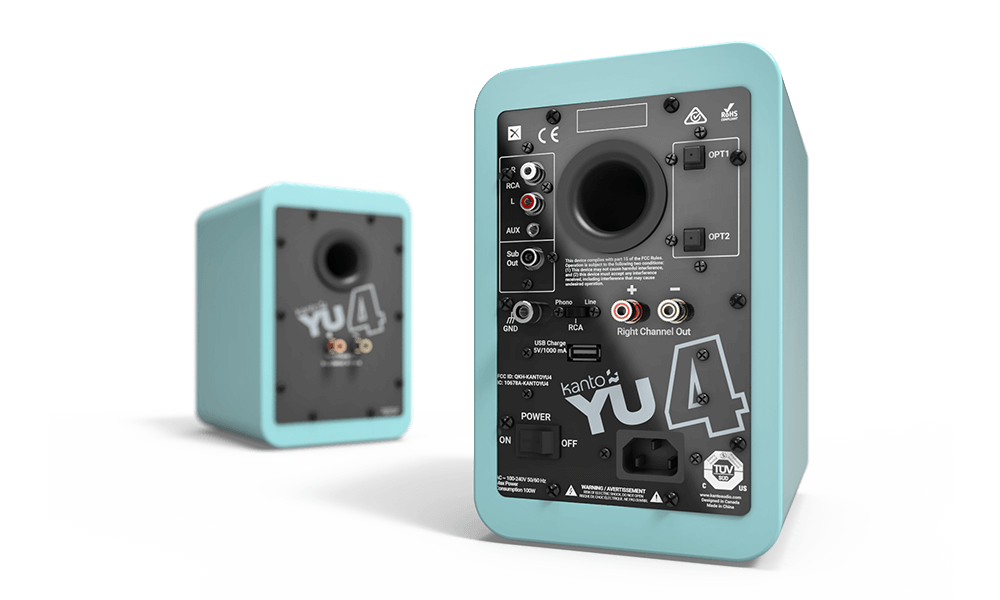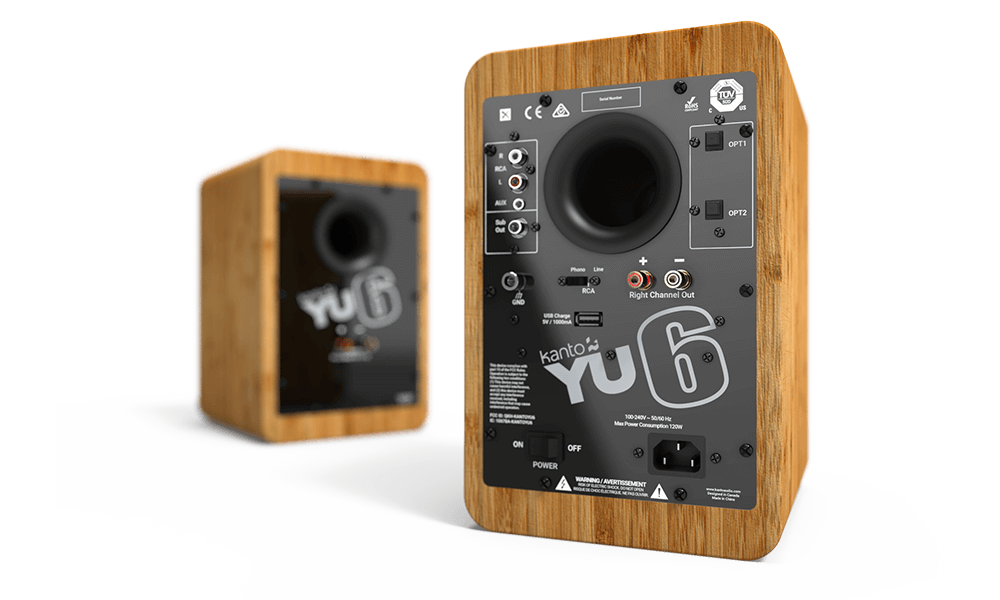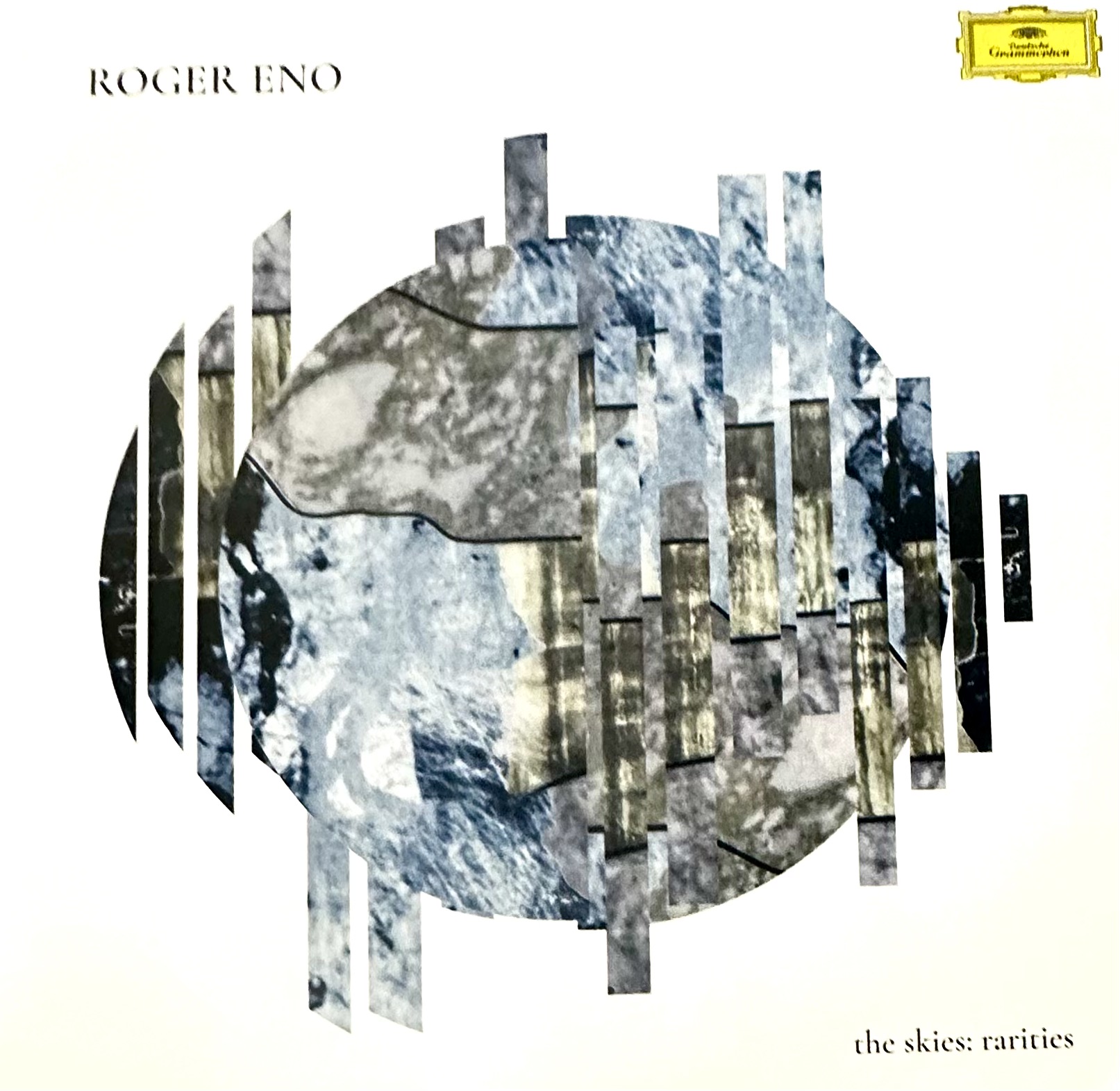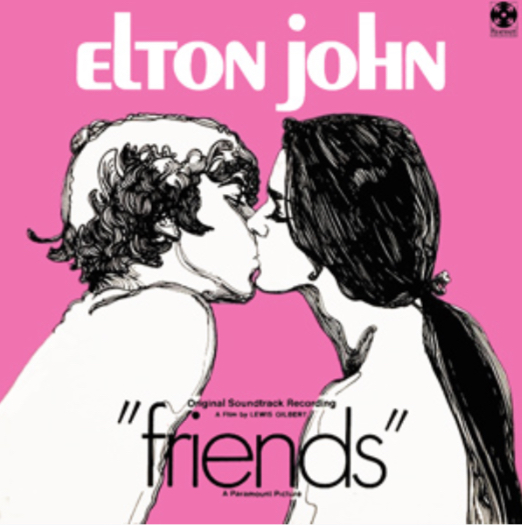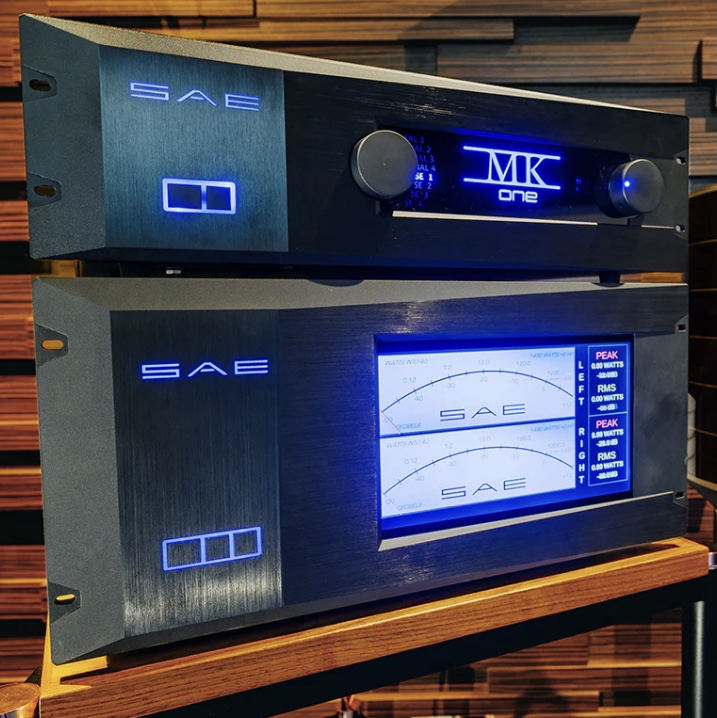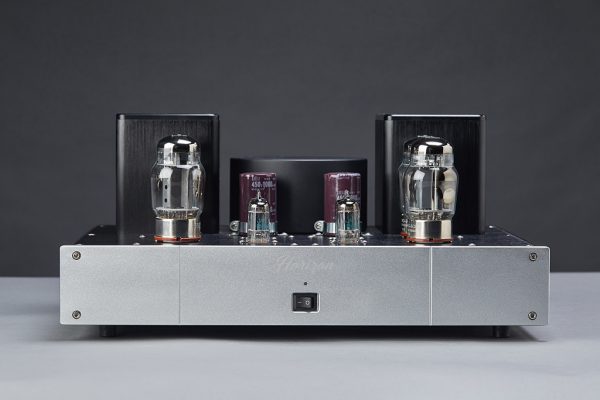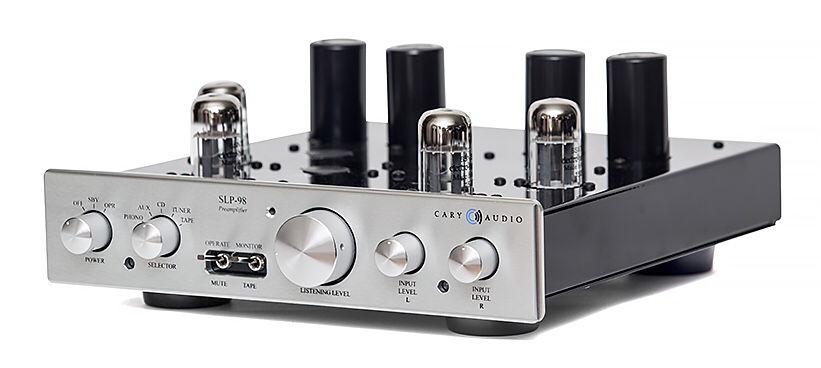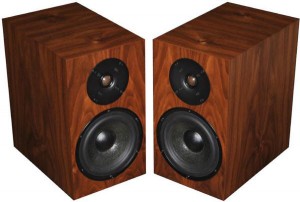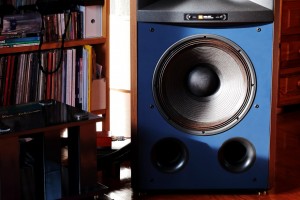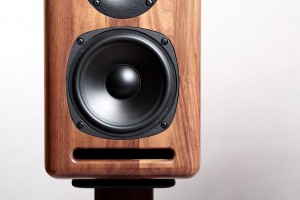If you have never heard of Kanto or their products don't feel bad. "Kanto was founded in January of 2007. The founders had a vision to build quality products with style—and offer excellent value to customers throughout their life cycle. Many years designing and manufacturing OEM products for large consumer electronics companies gave them the passion and understanding they needed to create a new brand with outstanding potential. Today, that knowledge and passion, combined with a team of dedicated design engineers, is the driving force behind their success."
As you can see from the price points this is not high end audio territory, at least not on the surface. I have recently reviewed some real budget priced items and am now captivated by what trickle down has done to the entry level market. I am finding that today's entry level offerings are light years ahead of mid to higher fi that I enjoyed in college.
I had not heard of Kanto, or seen any of their products until I stumbled, quite by accident, into their room at CES in January. I have to say I am very glad I did. In the room I met a very affable fellow by the name of Brett Smalley. Brett is the Marketing Manager for Kanto and he is especially passionate about the company and their products. We spent a good deal of time at the show discussing audio (and some other manly things) and especially the entry level, particularly how it applies to Millennials. I was first captivated by a pair of YU4 speakers in a color reminiscent of a cross between GM's Surf Green, and Sonic Blue that adorned the iconic Fender guitars of the late 50s and early 60s. Surf Green has graced more than a few of the Fenders I have owned, and guitars I have built.
I introduced myself to Brett and off we went. The subject of this review is the YU4, as seen in their room in the teal blue, and the YU6, a slightly larger version, in a nice bamboo wood finish. For the purposes of the review I set the YU4 up as a desktop speaker for my computer. The YU6 was placed on a pair of stands and took center stage in the main system in my listening room. Shortly after receiving the two speakers the SUB8 arrived to add to the mix along with a pair of dedicated stands for the YU6.
First a bit of specs on the three speakers:
YU4
- Tweeters: 1 inch silk dome
- Woofers: 4 inch Kevlar®
- Remote: Included
- Amplifier Type: Class D
- Nominal Impedance: 4 Ohm
- Frequency Response: 60 Hz – 20 kHz
- Total Harmonic Distortion: < 0.25%
- Crossover System: 2-way
- Crossover Frequency: 2.0 kHz
- Inputs: 1 x 3.5mm mini-jack AUX | 1 x RCA L/R with Phono Switch Inputs | 2 x Optical (TOSLINK) | 1 x Bluetooth™ with Qualcomm® aptX™
- Outputs: 1 x subwoofer | 1 x USB charge 5V 1A
- Speaker Terminals: Left and right binding posts
- Input Voltage / Frequency: 100V 60 Hz /240V 50 Hz (auto switching)
- Input Sensitivity: 560 mV
- Power Output: 140W peak power (70 Watts Total RMS)
- Standby Power Consumption: < 0.5 W
- Dimensions (each speaker): 5.5" W x 7.5" D x 8.7" H (14 x 19 x 22 cm)
- Net Weight (active): 6.9 lb (3.2 kg)
- Net Weight (passive): 5.5 lb (2.5 kg)
YU6
- Tweeters: 1 inch silk dome
- Woofers: 5.25 inch Kevlar®
- Remote: Included
- Amplifier Type: Class D
- Nominal Impedance: 6 Ohm
- Frequency Response: 50 Hz – 20 kHz
- Total Harmonic Distortion: < 0.3%
- Crossover System: 2-way
- Crossover Frequency: 2.0 kHz
- Inputs: 1 x 3.5mm mini-jack AUX | 1 x RCA with phono switch | 2 x optical (TOSLINK) | 1 x Bluetooth™ with Qualcomm® aptX™
- Outputs: 1 x Subwoofer | 1 x USB Charge 5V 1A
- Speaker Terminals: Left and right binding posts
- Input Voltage / Frequency: 100V 60 Hz /240V 50 Hz (auto switching)
- Input Sensitivity: 560 mV
- Power Output: 200W peak power (100 watts total RMS)
- Standby Power Consumption: < 0.5 W
- Dimensions (each speaker): 6.9" W x 8.1" D x 10.7" H (17.5 x 20.5 x 27.2 cm)
- Net Weight (active): 11.4 lb (5.2 kg)
- Net Weight (passive): 8.7 lb (4.0 kg)
SUB8
- Woofer: 8 inch paper cone driver
- Amplifier Type: Class D
- Nominal Impedance: 4 Ohm
- Sensitivity 1W/1m: 88 dB
- Total Harmonic Distortion: < 0.3%
- Low-Pass Filter: 40 Hz – 120 Hz
- Phase Switch: 0° and 180°
- Input: 1 x RCA L/R line level
- Input Sensitivity: 100 mV
- Frequency Response: 35 Hz – 175 Hz
- Input Voltage / Frequency: AC 100V – 240V 50/60 Hz (auto switching)
- Power Output: 250W
- Standby Power Consumption: < 0.5 W
- Dimensions: 11" W x 11" D x 11.9" H (28 x 28 x 30.3 cm)
- Net Weight: 17.2 lb (7.8 kg)
Take note of a couple of things in those specs! The preamp part of these speakers has a built in MM phono preamp! There is a switch for the single pair of RAC inputs to toggle between phono and line!
All three arrived well packaged. Twin boxes and sturdy foam surrounds. Included with every pair are a remote with batteries, power cord, roughly 10 feet of speaker wire ( immediately toss and get a decent set of cables, and use one to connect the two speakers. I will address this later), a 3.5mm auxiliary cable, a bunch of rubber feet, and a very easy to follow manual.
I first let the YU6 run for a day non stop to give it a break in. I am going to do part of the review of the monitors alone, and a second part with the dedicated subwoofer mated to the YU6 speakers. Brett stated that they do not require extended break in periods. As I was simmering the taco meat (since retirement my main duties are vehicle maintenance, house keeping, remodel superintendent, and chef) I sat down just to take a brief listen. The speakers were being driven strictly by my iPad and playlists that I created in Tidal. I was immediately taken aback by the soundstage and imaging. I had these diminutive speakers on loaded stands and five feet out from the front wall.
On the Leslie Duncan penned track "Love Song," a sparse recording by Elton John with only acoustic guitar, foot tapping (or metronome), and vocal harmonies from the album Tumbleweed Connection (you know. the GOOD Elton / Bernie stuff) the detail, the center focus, and width of soundstage was really shocking. The speakers disappeared in my room. I have owned monitors five times this cost that did not provide that level of soundstaging. The acoustic guitar was off to the left, well beyond the physical placement of the speakers. Elton's voice emanated from slightly right of center along with the foot tapping. The harmony vocals were rich, spread across the stage, and liquid.
Acoustic Alchemy's "Oceans Apart," from the album The Edge, is one of my favorite new age jazz songs. A lilting combination of nylon string, steel string acoustic guitars augmented by one of the tastiest synth solos and string arrangements ever. ( I once asked Greg Carmichael why they did not perform this number in concert? He stated the logistics of recreating it required more than they wanted to bring on the road, including personnel. Shame really because it would be a killer song live.)
The track "Deborah's Theme," from Chris Botti's Italia album followed up, and was exceptionally well rendered. If not the last word in transient response, or sheer dynamics, the YU 6s acquitted themselves nicely. The emotion in Chris's trumpet came through in full, and the tenor of the brass was scintillating. The rather daft and soft touch that Chris possesses on the trumpet is often something that gets lost in systems that deal with subtle nuance very well. All of that came through the YU6 speakers. Albeit a bit more closed and restrained than on a full fledged system. The resulting experience did not leave me feeling devoid of any of the enjoyment.
Harvey Mandel's "The Snake," from the album of the same name, was quite a little surprise. This is old school guitar jazz / rock fusion, and starts with a slamming little drum intro. A little snare roll, kick drum and hi hat action. Not as in your face as it would be from my reference system, it was still enough to make me sit up and rock my head a bit.
It was on Joni Mitchell's "Passion Play," from the Night Ride Home, that I got a further insight into what these monitors were able to do. This is a track that has a great interplay with the acoustic guitar, combined with some African drum rhythms and a driving bass underlying Joni's signature vocals, and interesting phrasing, that they really showed their stuff. The balance was spot on. Joni's guitar work, with its delicate finger picking underlying her exquisite vocals, left me drifting into the past when I spent time listening to Court and Spark on vinyl for hours on end. It definitely presented the music in full range, with all the bits and pieces there in proper soundstage and representation. The only niggling bit was that when compared to my reference system, everything was a bit smeared. That difference in small detail would be expected, considering the price point difference. When you consider the price, it seems like an exponentially small price to pay. HiFi is often a trade off of cost restraint offset by sonic possibilities. Something has to give, as they say!
Is this the optimum speaker for heavy bass laden masterpieces from Nine Inch Nails, Slip Knot, and the like? Probably not. The speakers lack the speed and extension to handle that kind of music in the same way it can handle the aforementioned tracks. In the same way it will not handle large orchestral passages like a full blown system. That being said, at lower volumes it will still deliver the essence of the music, and for a budding audiophile or an apartment dweller who must think of neighbors and not try to replicate a 9.5 San Andreas apocalyptic earthquake, the Kanto YU6 will provide a ton of listening pleasure and deliver it without a ton of gear.
I need to point out the stands that Kanto makes for these speakers. At $130 for the 32 inch stands they represent quite a bargain. The stands are heavy, mate up perfectly with the speakers, look great, and place them at just the right height for my listening area. The also come in a 26 inch version for slightly less. When they arrived I was not only pleased with the stands themselves, but the packaging was some of the best I have ever seen. Neatly laid out, including proper allen wrench for assembly. All components secured individually and with easy instructions. The speaker mounts for the stands are excellent and secure the speaker to the stand in a very solid, immovable fashion.
No need for a power amp or a preamp. Only have an iPod or a smartphone? No worries! You can stream all the digital music you want via Bluetooth. If you have a turntable, more power to you. It will run about any moving magnet cartridge through the built in phono stage. No need for a separate phono preamp. I can actually see this speaker mated with an entry level Sumiko turntable, Moonstone cartridge, a Bluetooth device, and having about all a person could need to enjoy music for a very long time.
One caveat with both of these speakers. They require a single positive / negative speaker cable to connect the powered unit with the passive second channel speaker. Kanto provides some dandy speaker wire. Think sub Monster Cable wire from 40 years ago. After an hour of listening to that I disconnected it, and ran one half of a pair of Paradox Pulse speaker wires between the two. The difference was on par with the aforementioned San Andreas earthquake. Earth shattering comes to mind; the sound was opened up immensely, the soundstage was deep and wider and most specifically the mids smoothed out, especially vocals and the highs lost some of the edge. Any number of entry level speaker cables from companies like Audioquest, Kimber, etc. would be a great investment with this speaker. After all you don't need an amp, preamp, or a phono stage, so don't be a cheapskate, buy some decent speaker cables when you purchase these speakers. And if you are the market for a setup like I have mentioned, you fall into that category. You will be glad you upgraded!
Today I found myself with a lot of free time as it is very cold, windy, and we are expecting snow, so yard, garage and auto projects scrapped for the day. I decided to set up a direct A/B compare test between my reference system and the YU 6 setup. I used the same Tidal playlist and streamed from my iPad to the YU 6s with the Sub 8, and from my iPhone X to my main system. There was of course a noticeable difference as my main system is currently running modified Quicksilver KT88s with Sophia Grade A Blue Bottle tubes, My Music Envoy tube preamp, and the Von Schweikert VR4 A version 4.79s. The system running primarily XLO Signature cabling.
I was stunned how well the Kanto represented itself in the shootout. Being able to toggle between the two in real time showed how much more music is released by my reference system, hereafter referred to as System A and the YU 6 as System B. This is a totally UNFAIR comparison. Like putting a stock Mustang 5.0 up against a Ferrari 488 Pista. I have a reason for doing this so bear with me.
First the negatives. System B sounded restrained in comparison. The high frequencies were a little brittle sounding compared to System A, and the decay on things like cymbals was not as long or as delicate. The midrange vocals, be it male or female, lacked some of the airspace around the vocals. A bit of muffling in comparison. Some of the delicacy of a female vocalist, like Eva Cassidy, was missing. In the bottom end it reached down admirably, but was slightly bloated, exhibited some serious bloom when pushed, and could only reach down so far before breaking up noticeably.
Now for the positives. The YU 6 system with a decent speaker cable to connect the two speakers, Sub 8, and the Kanto 32 inch stands, you are looking at around $817 plus tax, or roughly about $35,000 less than the system A items it was up against. Add in a nice iPad Pro, and you have a system that would satisfy anyone sans the hardcore audiophile, and even for that group it would make a nice secondary system in a bedroom or small den space. Compared to the cost value, the YU6 makes a damned good argument for itself to be the mainstay of a small beginner or budget system. If you add the Sub 8 you have a much better, cleaner, and powerful bass. Use the rest of the money for a nice slightly used car! If I were to pay retail at today's prices and replaced my current system, it would cost me in excess of $100,000. At some point in my future I am going to have to leave behind the massive system and head for a smaller footprint. This experience leaves me with a great deal of hope that I will not give up as much in quality of music as I feared I would.
While running the YU4 in my computer system I did everything from listening to YouTube videos, music files, and using them as monitors for my backing tracks and guitar playing as I recorded music on a separate system for playback. Everything stated for the YU6 holds true for the YU4 as they are simply the same setup with slightly smaller cabinet volume and mid / woofer. At a slightly reduced price, they make a great set of speakers for a serious desktop setup, and my nephew Danny was really smitten by them. He is a musician and a typical Millennial. Limited budget and needs the biggest bang for the $$$ that he can get. He gave them a very firm thumbs up, and then asked if he could have this set? Typical! Lol I gave him Kanto's contact info! If you want a small set of speakers for dedicated listening, go with the YU6 or the upcoming TUK system. Computer speakers definitely go with the YU4! You won't be sorry you invested the time to check them out!
Looking for a small alternative system for apartment dwelling, or the en vogue Tiny Home, or simply a beginner with limited resources? I suggest you audition the Kanto YU4 or YU6 and SU8 sub with matching stands. You simply cannot beat the value at this price point! I also suggest you run, and not walk, before they figure out they are actually giving this gear away at those prices.
YU 4 Self Powered Speakers
Retail: $329 per Pair
YU 6 Self Powered Speakers
Retail: $399 per Pair
SU8 Sub
Retail: $289.99
Kanto Speaker Stands
Retail: $139
Kanto
110-2440 Canoe Ave., Coquitlam, BC
V3k 6C2 Canada
Toll Free US & Canada: 1.888.848.2643







